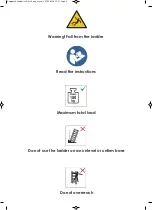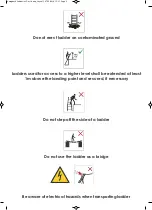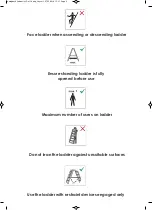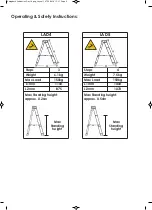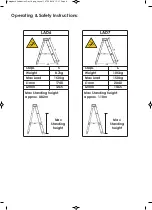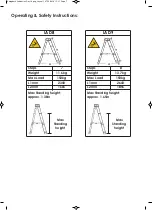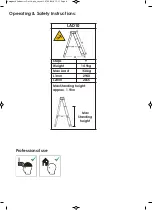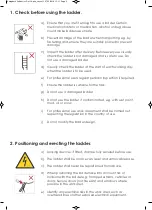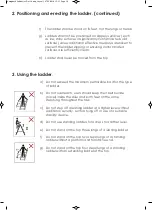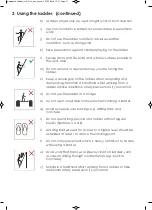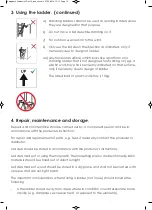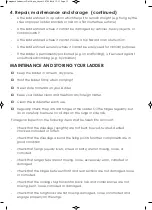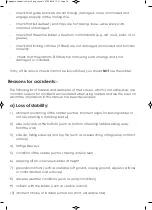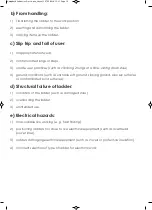
h) Ladders should only be used for light work of short duration.
i) Use non-conductive ladders for unavoidable live electrical
work.
j) Do not use the ladder outside in adverse weather
conditions, such as strong wind.
k) Take precautions against children playing on the ladder.
l) Secure doors (not fire exits) and windows where possible in
the work area.
m) Do not ascend or descend unless you are facing the
ladder.
n) Keep a secure grip on the ladder when ascending and
descending; Maintain a handhold whilst working from a
ladder or take additional safety precautions if you cannot.
o) Do not use the ladder as a bridge.
p) Do not wear unsuitable footwear when climbing a ladder.
q) Avoid excessive side loadings e.g. drilling brick and
concrete.
r) Do not spend long periods on a ladder without regular
breaks (tiredness is a risk).
s) Leaning ladders used for access to a higher level should be
extended at least 1 m above the landing point.
t) Do not carry equipment which is heavy or difficult to handle
while using a ladder.
u) Avoid work that imposes a sideways load on ladders, such
as side-on drilling through solid materials (e.g. brick or
concrete).
v) Maintain a handhold whilst working from a ladder or take
additional safety precaution if you cannot.
3. Using the ladder. (continued)
Swingback Ladder Ins Dec 18.qxp_Layout 1 07/12/2018 13:31 Page 11


